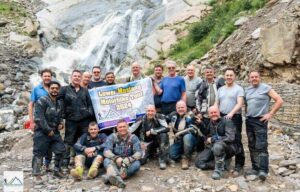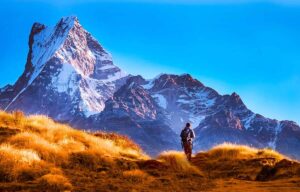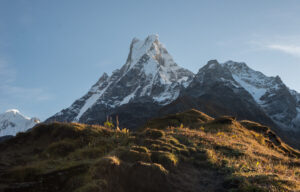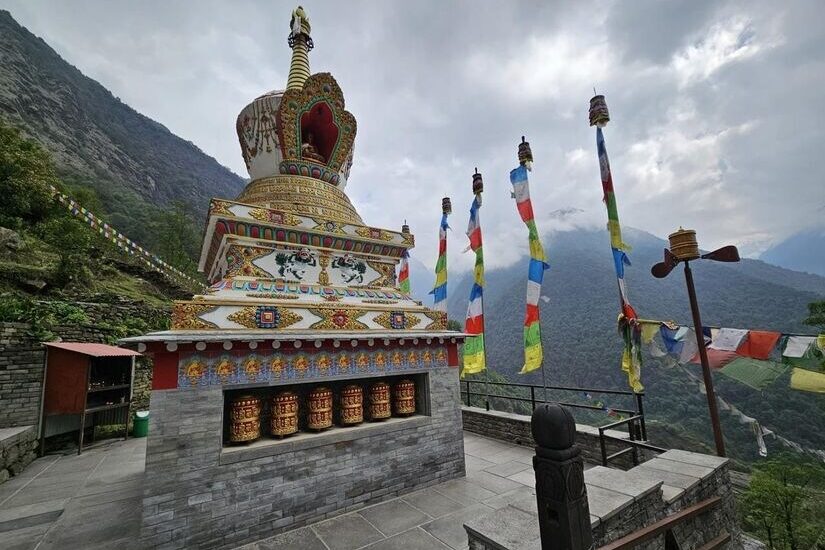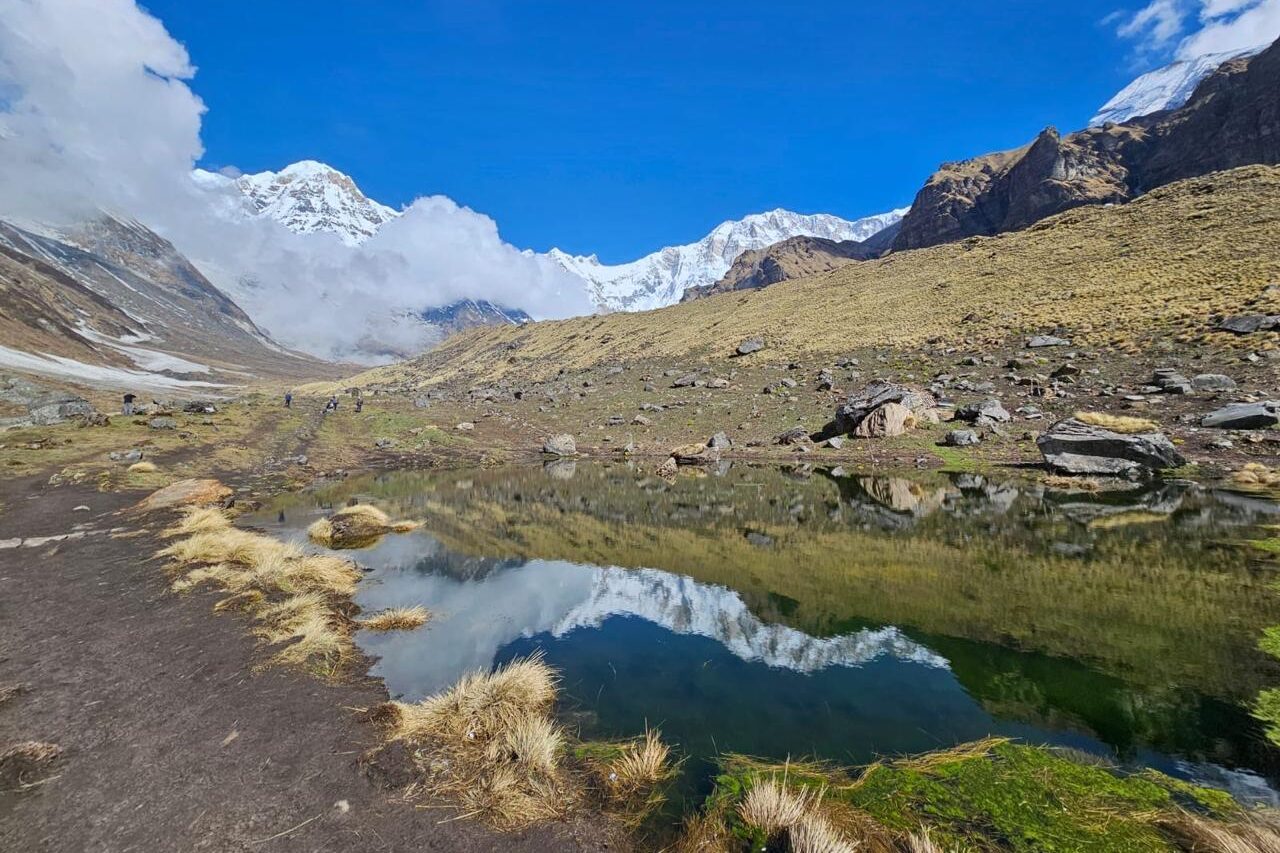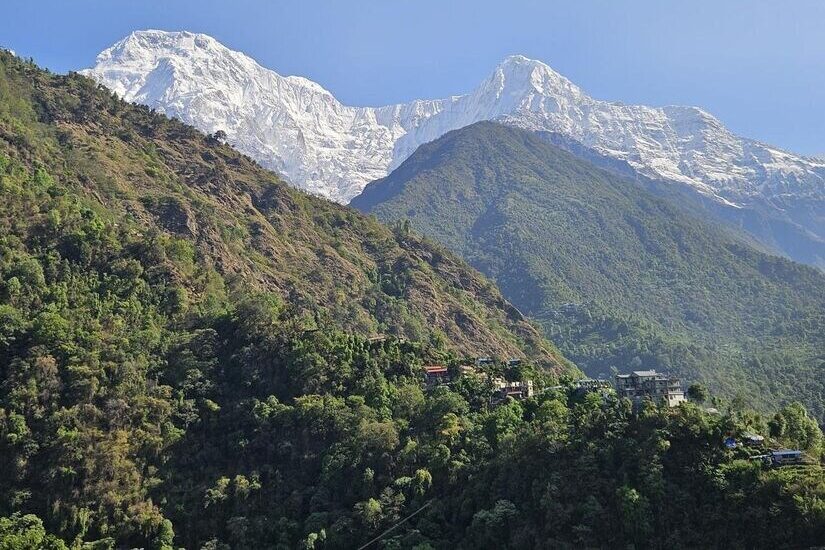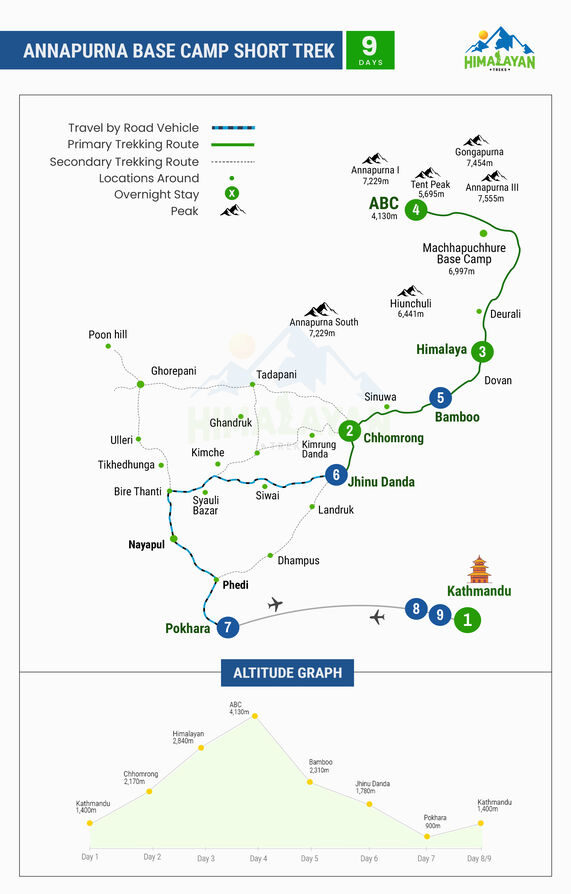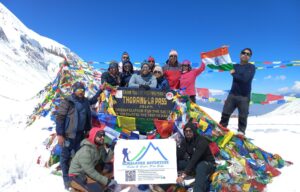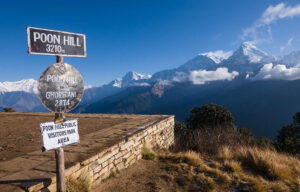- Trekking Route and Duration:
The Annapurna Base Camp Trek typically takes around 9 to 12 days to complete, depending on the starting point and pace of the trek. The route begins in Nayapul, a short drive from Pokhara, and follows a well–marked trail through picturesque villages, terraced fields, lush forests, and rugged mountain terrain. Highlights of the trek include Chhomrong, Himalaya, Machhapuchhre Base Camp, and finally, the majestic Annapurna Base Camp itself.
- Altitude and Acclimatization:
Altitude sickness is a potential risk on any trek in the Himalayas, including the Annapurna Base Camp Trek. It’s essential to acclimatize properly by ascending gradually and allowing your body time to adjust to the altitude. Take rest days as needed and drink plenty of water to stay hydrated. Symptoms of altitude sickness
include headache, nausea, dizziness, and shortness of breath. If you experience any of these symptoms, descend to a lower altitude immediately.
- Permits and Regulations:
Before starting the trek, you’ll need to obtain the necessary permits. The Annapurna Conservation Area Permit (ACAP) and Trekkers‘ Information Management System (TIMS) card are required for trekking in the Annapurna region. These permits can be obtained from the Nepal Tourism Board office in Kathmandu or Pokhara. Make sure to carry these permits with you throughout the trek, as they will be checked at various checkpoints along the trail.
- Accommodation and Meals:
Accommodation options along the Annapurna Base Camp Trek range from teahouses to lodges, offering basic but comfortable amenities for trekkers. Most teahouses provide dormitory–style rooms with shared bathrooms, while some offer private rooms for an additional cost. Meals are typically served in the communal dining area and include a variety of Nepali and international dishes such as dal bhat (rice and lentils), noodles, soup, and potatoes. Vegetarian and vegan options are usually available, but choices may be limited at higher altitudes.
- Packing Essentials:
Packing the right gear is crucial for a successful trek to Annapurna Base Camp. Essential items include sturdy hiking boots, warm clothing layers, a waterproof jacket and pants, a sleeping bag, a hat and gloves, sunglasses, sunscreen, a headlamp or flashlight, water purification tablets, a first aid kit, trekking poles, and a sturdy backpack. It’s also a good idea to pack snacks and high–energy foods to fuel your trekking adventures.
- Weather and Best Time to Trek:
The weather in the Annapurna region can be unpredictable, with temperatures varying depending on the season and altitude. The best time to trek to Annapurna Base Camp is during the spring (March to May) and autumn (September to November) seasons when the weather is generally stable, and the skies are clear, offering stunning views of the mountains. During the spring, the rhododendron forests are in full bloom, adding a splash of color to the landscape, while autumn brings crisp, clear days and cooler temperatures ideal for trekking.
- Health and Safety:
Health and safety should be top priorities while trekking in the Himalayas. It’s essential to stay hydrated, eat nutritious meals, and listen to your body’s signals. Avoid drinking untreated water from streams and rivers, as it may contain harmful bacteria. Take precautions against sunburn and frostbite by wearing sunscreen, sunglasses, and protective clothing. In case of emergency, there are medical facilities available in larger villages along the trekking route, but it’s advisable to carry a basic first aid kit and any necessary medications with you.
- Cultural Etiquette and Respect:
As you trek through the Annapurna region, you’ll encounter diverse cultures and traditions, including those of the Gurung, Magar, and Thakali ethnic groups. It’s essential to respect the local customs and traditions by dressing modestly, asking for permission before taking photographs, and refraining from littering or damaging the environment. Engage with local villagers respectfully and be open to learning about their way of life.
- Hiring Guides and Porters:
While trekking to Annapurna Base Camp is possible independently, many trekkers choose to hire experienced guides and porters for added safety and convenience. Guides can provide valuable insights into the local culture, history, and geography of the region, while porters can carry heavy loads, allowing trekkers to enjoy the journey without the burden of a heavy backpack. Hiring local guides and porters also supports the local economy and ensures that your trekking experience is both enjoyable and responsible.
- Environmental Considerations:
The Annapurna region is a fragile ecosystem that requires careful conservation and preservation efforts. As responsible trekkers, it’s essential to minimize your environmental impact by following Leave No Trace principles, disposing of waste properly, and avoiding single–use plastics. Choose eco–friendly accommodation options that prioritize sustainability and support local conservation initiatives whenever possible. By treading lightly and respecting the natural environment, you can help ensure that future generations can enjoy the beauty of the Annapurna region for years to come.
